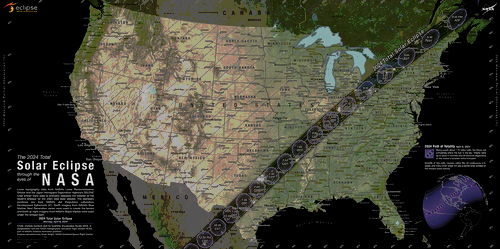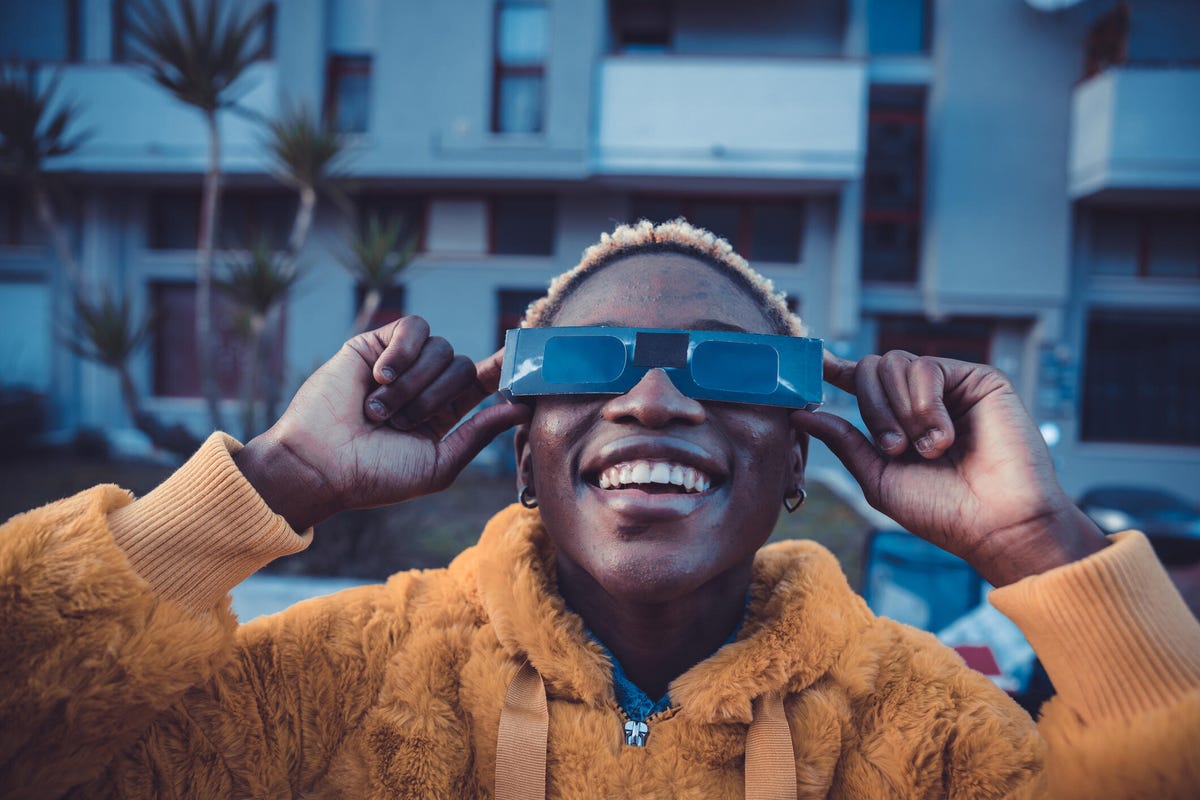There’s a total solar eclipse passing through the US on April 8 this year, and natural-wonder seekers, take note: It’ll be the last total solar eclipse visible from the contiguous US until 2044, NASA says.
A total solar eclipse happens when the moon momentarily blocks the sun’s face, resulting in a very cool yet very eerie darkness. It’s the same type of eclipse that happened in 2017; last year’s was only an annular eclipse.
As Delta cashes in with a special solar eclipse flight and hotels sell out, people are already making travel plans to states with the full view of “totality,” which include parts of Texas, Oklahoma, Arkansas, Missouri, Illinois, Kentucky, Indiana, Ohio, Pennsylvania, New York, Vermont, New Hampshire and Maine, as well as smaller parts of Michigan and Tennessee.
Whether it’s a total solar eclipse or an annular eclipse, it’s important you know the safety rules and find the right eye protection if you plan on looking at an eclipse. Aside from the very short moment of darkness that is the total solar eclipse, the sun will be partially eclipsed this April, making special eclipse glasses crucial if you plan to be outside or viewing the sky in any way.
Dr. Ronald Benner, president of the American Optometric Association, told us last October that unsafe viewing of a solar eclipse can cause solar retinopathy, which is a type of retinal damage he compared to sunburn on the “satellite dish of the eye.” Failing to wear proper eye protection will let in a dangerous amount of ultraviolet radiation and damage the macular tissue in the retina.
“Once it’s burned and scarred, it’s a bad thing,” Benner said.
Here’s what to know about solar eclipse eye safety, including how to find the right glasses and what looking at an eclipse can do to your vision if you forgo the glasses.

NASA’s map shows the lucky strip of the US that will be within the viewing area of the total solar eclipse this April 8.
How to find solar eclipse glasses and avoid fakes
Unfortunately, sunglasses aren’t going to cut it. Proper solar viewers or eclipse glasses are thousands of times darker than sunglasses, according to NASA.
Both the American Optometric Association and the American Academy of Ophthalmology say to look for glasses that have been given the OK by the American Astronomical Society. The AAS includes glasses that meet the International Organization for Standardization (ISO) 12312-2 standard. Importantly, counterfeit glasses or those that don’t meet safety standards can also claim this or use it as a logo — so stick to the AAS’ specially compiled list of Suppliers of Safe Solar Viewers & Filters and don’t rely only on looking for that number alone.
There’s a very long list of sellers, but some brands/sellers recommended by the AAS are:
You won’t see sites like Amazon on the AAS’ list of recommended sellers, the organization says, because counterfeit or improperly tested glasses have been sold on the platform in the past. But if you do go the Amazon route, the AAS recommends making sure the seller is identified on Amazon and is listed on the AAS’ page of safe suppliers.
One AAS-approved glasses seller that offers products on Amazon is Soluna, which links out to Amazon pages directly from its website. (You can see this link for a $18 2-pack, this one for a $29 5-pack or this one for a $35 10-pack, all of which Soluna provides itself.) However, do keep in mind the AAS warning about marketplaces like Amazon and eBay, and consider giving your glasses an extra test prior to any eclipse activity (see the section below this one).
Some brick-and-mortar stores — including Walmart, Lowes, Kroger and even Cracker Barrel — sell glasses in-store that meet safety standards, the AAS says, but it can’t guarantee that the glasses sold online by these stores are also legitimate, because they may use a different seller for online products. But if you’re running out of time to get glasses, it’s worth swinging by one of these stores to see what they have in stock.
One more way to get safe glasses: You may be able to pick up a free pair at your local library if it’s part of the STAR Library Network. Check to see, with this interactive map of participating libraries, which the AAS provided.
How to check your solar eclipse glasses
Even if you’ve done all the right things by referencing the AAS website to find the right glasses or viewers, it’s a good idea to give them a test run before the main event.
You can do this by putting your glasses on and wearing them around other sources of light, like street lights or car lights. According to the American Academy of Ophthalmology, you shouldn’t be able to see any light in your eclipse glasses, besides the sun or sunlight reflected in a mirror. If light comes through, Benner said, “they’re not good.”
For parents of younger kids, Benner has an extra word of caution: Watch them closely with their glasses, or just keep them in the house to watch it on TV.
Us adults know better than to risk looking at the sun, but children may not.

Solar retinopathy: What happens to your eyes if you look at a solar eclipse?
For folks who will be in the path of totality, there is a “brief and spectacular” period of time when it’s safe to look at the sky without glasses, according to NASA, but it’s crucial to keep them on during the other phases of the eclipse while the sun is still partly visible. According to the National Park Service, the total block lasts only for about two to four minutes depending on where you are in the path of totality.
And for people viewing a partial eclipse outside the path of totality, there’s never a safe time to view the eclipse without risking eye damage, including solar retinopathy.
Put simply, solar retinopathy is damage to the retina, and you run that risk by exposing your eyes to the sun. Benner said the damage usually takes about six to 12 hours to show up. Common symptoms include blurry vision, blind spots, distorted color vision or otherwise warped vision.
If you notice these symptoms, you should see a doctor right away to pinpoint the source of your vision problems. But according to the American Academy of Ophthalmology, there is “no known beneficial treatment” for the condition, only prevention.
Many patients will regain normal vision acuity within a few months, though it may be random. Benner added that recovery may take up to six months or a year, and that sometimes people don’t fully recover and their vision acuity is affected from then on.
Is there anyone who might be more susceptible to solar retinopathy? No, Benner said.
“Every individual is a unique individual,” Benner said, but no one’s immune to damage when it comes to the delicate parts of the eye. In other words, don’t think you’ll be safe to steal a peak because you don’t sunburn often.
“When it comes to the retinal tissue, it’s so much different,” he explained.
There’s also no specific amount of time that you can look at the sun before you’re at risk of retinal damage. According to the Australian Radiation Protection and Nuclear Safety Agency, even a few seconds can cause permanent harm.

